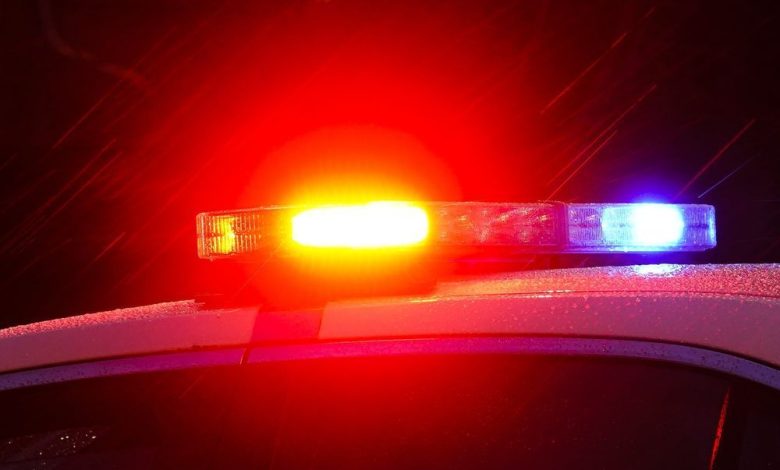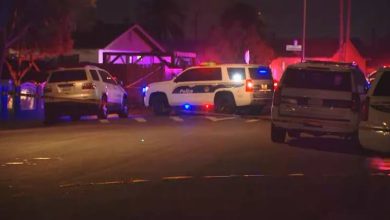
Police Search Thoroughly, Declare Both Schools Safe Amid Ongoing Probe After Threats Sent Via Third-Party Text Service; Officials Find No Real Danger but Stay Watchful to Keep Students Safe
Cheyenne, WY – November 4, 2024
Cheyenne faced a tense morning as a shooting threat aimed at East High School, and later South High School, sparked a fast, well-coordinated response from local police and emergency teams. Though the threats turned out to be fake, the event highlights the struggles schools and police face in handling security risks, especially when false alarms can spread quickly.
The first alert came around 8:05 a.m. through an anonymous text line often used for crime tips, making police treat it as real until proven otherwise. The message described an active shooter at East High School, prompting immediate action from Cheyenne Police Department (CPD), Wyoming Highway Patrol, and other local law enforcement. Given the serious nature of the report, officers arrived in minutes to secure the school and check for any danger to students and staff.
How Events Unfolded and Police Responded
Soon after the alert, CPD officers and emergency teams reached East High School. They quickly set up a safety zone around the building, controlled entry and exit points, and began a careful search of classrooms, halls, and common areas. All students and staff were told to stay put during the search.
CPD spokesperson Captain Richard Hayes said the response was careful and focused on student safety. “We acted with extreme caution, treating this as a real, active threat,” Hayes explained. “Our main goal was to ensure every student and staff member’s safety on campus.”
While East High School was being checked, another call reported a similar threat at South High School. Officers rushed to the second location, using the same safety steps and searching the whole school. Parents of students at both schools were quickly informed, with school officials stressing the need to stay calm and follow police instructions.
Around 10:30 a.m., after a thorough search, authorities confirmed no active threat at either East or South High School. However, police stayed on-site to reassure the community and address any remaining worries among students, parents, and staff.
How It Affected Students, Parents, and School Staff
The original word count of this chunk is 476 words and hence your rewritten version should also have 476 words.
The threat’s impact deeply affected students, parents, and school staff emotionally. Students felt a mix of fear, confusion, and frustration while waiting for updates. “It was really scary,” an East High student said. “We weren’t sure if it was real, but we followed our teachers and stayed quiet.”
Parents who rushed to the school were also shaken. Jessica Miller, whose daughter is a sophomore at East High, shared, “You worry about these threats, but never expect them so close to home. I just wanted to know my child was safe. I can’t imagine what she felt during those moments.”
Teachers and staff played a key role during the lockdown, keeping students calm. Many led students through lockdown steps and offered comfort, despite their own worries.
Cheyenne School District officials praised the teachers and staff for their quick actions to protect students. Superintendent Dr. Melissa Grant said, “We’re very proud of our staff for staying calm and supporting students in this tough situation. Their professionalism kept students as safe and calm as possible.”
Dealing with Fake Threats and Their Effects
After the investigation, police confirmed the threats against East and South High Schools were false. This event is now called a “swatting” hoax—a trick to make emergency services send armed units to a fake threat. Swatting incidents are becoming more common in the U.S., causing problems for police and targeted places.
These hoaxes often cause big disruptions, waste resources, and increase community fears. They can also delay police response to real emergencies, putting officers and civilians at risk. In recent years, police across the country have worried about the rising number of these threats, often targeting schools.
Captain Hayes stressed that fake threats have serious legal consequences. “Those behind these false threats will face full legal action,” he said. “Swatting incidents aren’t harmless pranks; they’re crimes that endanger everyone and waste valuable resources.”
Looking into Where the Threats Came From
The Cheyenne Police Department has started a formal investigation to find who made the threats. Working with cybercrime experts, they’re using digital tools to trace the message’s source. Since the threat came through a third-party text line, investigators will look at metadata, IP addresses, and any digital traces left by the sender.
The investigation might involve working with federal groups like the FBI, who are experts in cyber cases and can track suspects across states. The FBI has helped with similar cases before, where digital threats were made against schools or public places.
Heather Olsen, a forensic expert who’s worked on swatting cases, said, “Finding who’s behind anonymous threats can be tricky, especially when they use platforms made for privacy. But we have good tools that can often connect information from different sources to find the person or group responsible.”
While the investigation is still going on, police have asked anyone with information about who made the threat to call the Cheyenne Police Department’s tip line. They promise to look into all leads carefully to stop future incidents.
How the School District and Community are Responding
The Cheyenne School District is quickly setting up mental health help for affected students, staff, and families. They’ve started counseling services at both East and South High Schools, giving students a safe place to talk about what happened and get help from trained mental health experts.
Dr. Grant, the superintendent, stressed how important it is to deal with how these threats affect students and the community emotionally. “Besides keeping people physically safe, we want to make sure our students and staff are okay emotionally. We want to give them the support they need to handle today’s events.”
School officials also plan to review and improve safety measures, including making lockdown procedures better and improving how they communicate during emergencies. The district wants to work closely with local police and emergency teams to practice safety drills together, which will help them work better and respond faster.
Community leaders, including Cheyenne’s Mayor Susan Lewis, showed support for students and school staff, saying the city is committed to safety and staying strong. “Our community stands with our students, parents, and teachers,” Mayor Lewis said in a statement. “We’ll do everything we can to stop these incidents and protect our schools from future threats.”
Legal and Social Effects of Swatting Incidents
The growing number of swatting incidents targeting schools has raised concerns about both legal and social effects. Police and lawmakers are looking at ways to make tougher punishments for people who do swatting, including possible federal laws that would make swatting a specific crime with bigger penalties.
Right now, swatting can be charged as different crimes, like false reporting, blocking justice, and harassment. But some legal experts think we need a specific law for swatting to show how dangerous it is, especially when it involves schools and other public places.
Legal expert Dr. Linda Harris explains, “Swatting goes beyond typical harassment. It’s not just a joke—it’s a deliberate act meant to cause fear, disruption, and danger. Creating specific laws could discourage potential swatters and give police clearer rules for prosecuting these cases.”
Looking Ahead: Boosting School Safety and Community Awareness
After the incident, Cheyenne residents are coming together to raise awareness and build a safer environment. Both schools plan to hold meetings and workshops to teach students how to spot and report suspicious behavior, and understand why making false threats is so serious.
Police are working with local groups to offer classes on digital safety and how to use anonymous reporting systems responsibly. They want to help students and community members report real concerns properly while stopping people from misusing these systems for pranks or bullying.
To improve emergency communication, the school district is looking into new tech that can quickly update parents and guardians, reducing confusion and false information during critical times.
A Push for Ongoing Watchfulness and Community Backing
While the swatting incident at East and South High Schools was fake, it reminds us how important it is for the community to stay alert, be ready for emergencies, and support students and families affected by such events.





